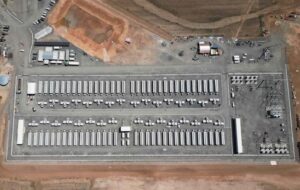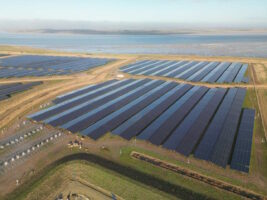South Australia’s state Liberal government says the second stage of Tesla-inspired virtual power plant is now over-subscribed, and it is now looking at the design of the third stage which could deliver a 250MW resource to the state’s renewable dominated grid.
Energy minister Dan van Holst Pellekaan said more than 1,100 households have now signed up to the program, which delivers rooftop solar and a Tesla Powerwall 2 battery to mostly low income households, and delivers a 20 per cent cut in electricity prices for those who need it most.
The program is one of two significant battery storage programs in South Australia. The Home battery scheme was launched by the Liberal government, but while there was initial doubt about the future of the Tesla VPP, a separate scheme initially proposed by Labor, the Liberals eventually embraced the idea.
Now, through these and other VPP schemes offered by AGL and Simply Energy, the state looks set to have more than 100,000 homes with battery storage, potentially providing a valuable resource for a state grid that is already at more than 50 per cent renewables and heading towards 100 per cent by 2030.
“This VPP is delivering affordable electricity to some of South Australia’s most disadvantaged households whilst increasing the reliability of the state’s electricity network,” van Holst Pellekaan said in a statement.
“Households participating in the Phase 2 trial are charged electricity rates more than 20 per cent better than the Default Market Offer introduced on 1 July 2019.
“Tesla is regularly reviewing and benchmarking the VPP Program Offer to ensure the program continues to deliver the savings promised to customers and that the VPP Program Offer is the best published retail offer in the South Australian market.”
Van Holst Pellekaan says results from Phase 1 and Phase 2 of the Tesla VPP project are being taken into account as the government considers the launch of phase 3, which would seek to expand the program to 50,000 homes, focusing on Housing SA homes, low income homes, and then others.
“Phase 3 of the VPP could see 50,000 homes connected to the VPP becoming the equivalent of a 250MW virtual power plant,” he said.
“VPP’s will be an integral part of the future of Australia’s energy system, allowing people with solar panels to store the energy they generate during the day to power their home after the sun goes down.”
The first two phases were open to 1,100 installations, and the fact that more than that number have signed up reflects the fact that some Housing SA homes are not suitable for solar or batteries, but will still get the discount for signing into the scheme.
The scheme is also trialling smaller rooftop solar systems to be trialled to cater for those properties with smaller roofs or other physical constraints.
The SA Virtual Power Plant trial phases have been supported by a $2 million grant and $20 million loan from the South Australian Renewable Technology Fund. But it’s thought that the next phase may require the participation of a retailer.
The Australian Energy Market Operator intends to include the SA VPP as part of its Virtual Power Plant Demonstrations starting in late July, which will help frame the operating standards for such resources, which will be particularly important as the amount of distributed energy – which includes rooftop solar, batteries, demand response, and electric vehicles – increases further.
“The VPP demonstrations will provide evidence-based learning towards the integration of distributed energy resources to unlock scalable consumer value and power system reliability and security in the National Electricity Market,” AEMO’s Emerging Markets and Services General Manager, Violette Mouchaileh, said in a statement.
Van Holst Pellekaan has said that the state-government Home Battery Scheme, which offers a rebate to 40,000 homes for battery installations (declining over time), may be offered to rental properties, property developers and aged care facilities.
“We’ve had feedback from the community that those who are renting and in apartments want to benefit from new technologies such as batteries,” said the Minister. “We’re also looking at people who don’t have an individual electricity meter but use power, such as in some retirement villages or supported accommodation, and how those sites can participate.”
The news comes as Tesla quietly reduced the cost of its Powerwall 2 battery units – albeit slightly ($650) – and as Standards Australia said strict new installation rules had been approved by “consensus.”
However, Standards Australia have not revealed the votes on the controversial standards, and some in the industry are puzzled as to why Standards Australia apparently didn’t count votes from New Zealand members of the panel. This would have given the numbers to send the standard back for further discussions.
Standards Australia has, however, indicated it is willing to take on board the views of those who voted against the standard, raising hopes that some of the most extreme clauses can be modified.










